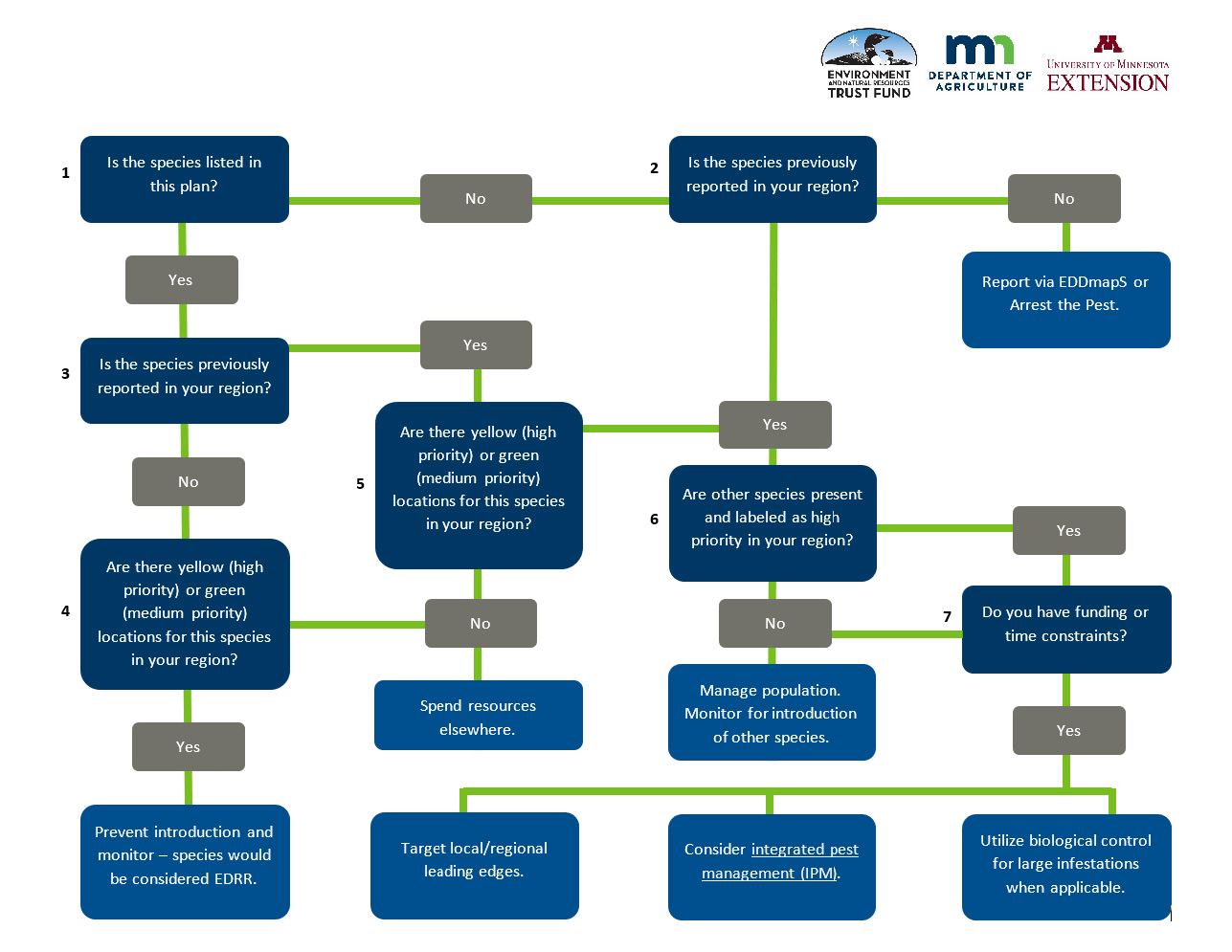Return to Noxious Weed Program Projects main menu
Tactical Invasive Plant Management Plan
This plan offers guidance to decision-makers for prioritizing invasive plant management activities. It is recognized that there are insufficient financial and personnel resources to control all invasive plant populations in Minnesota. The aim is to provide information in the form of invasive plant distribution modeling, prioritization maps based upon multiple criteria, identification and management timing guides, and tools for reporting invasive plants and tracking management activities. Decisions about which invasive plant infestations are controlled are made at all levels from federal to local, but the majority of decisions are made at the local level.
Thirteen species were selected for assessment because they are:
- Designated noxious weeds in Minnesota
- Not considered early detection within the state but may be considered early detection at a regional or local level.
The following species were selected: Canada thistle (Cirsium arvense), common/European buckthorn (Rhamnus cathartica), common tansy (Tanacetum vulgare), garlic mustard (Alliaria petiolata), glossy buckthorn (Frangula alnus), knotweeds including Japanese (Polygonum cuspidatum) and Bohemian (Polygonum × bohemicum), leafy spurge (Euphorbia esula), multiflora rose (Rosa multiflora), narrowleaf bittercress (Cardamine impatiens), plumeless thistle (Carduus acanthoides), purple loosestrife (Lythrum salicaria), spotted knapweed (Centaurea stoebe), and wild parsnip (Pastinaca sativa).

Text explanation of flow chart:
Box 1: Is the species listed in this plan? If yes go to box 3, if no go to box 2.
Box 2: Is the species previously reported in your region? If yes go to box 6, if no report via EDDMapS or Report a Pest.
Box 3: Is the species previously reported in your region? If yes go to box 5, if no go to box 4.
Box 4: Are there yellow (high priority) or green (medium priority) locations for this species in your region? If yes prevent introduction and monitor – species would be considered EDRR. If no, spend resources elsewhere.
Box 5: Are there yellow (high priority) or green (medium priority) locations for this species in your region? If yes, go to box 6, if no spend resources elsewhere.
Box 6: Are other species present and labeled as high priority in your region? If yes go to box 7, if no manage population and monitor for introduction of other species.
Box 7: Do you have funding or time constraints? If no manage population and monitor for introduction of other species. If yes target local/regional leading edges, consider integrated pest management (IPM), or utilize biological control for large infestations when applicable.

